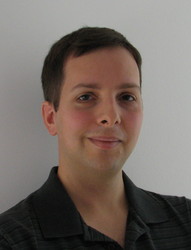About

LinkedIn - BitBucket - GitHub - AEI
I am a Research Software Engineer at Manchester University, working with researchers across the university on research software projects.
Research in Numerical Relativity
I was a researcher at the Albert Einstein Institute in Potsdam, Germany working in the Astrophysical and Cosmological Relativity division. My scientific focus has been on Numerical Relativity (NR), the solution of Einstein’s equations of General Relativity by numerical methods on computers. These solutions are fundamental to understanding the physics of gravitational wave (GW) sources such as binary black holes (BBHs), as first detected in 2015 by LIGO.
My research interests include:
- Binary black holes:
- Measurement of binary black hole parameters from gravitational wave detector data informed by Numerical Relativity simulations
- Comparison of NR simulations with approximate analytical models used in GW parameter estimation
- Pushing the boundaries of BBH parameter space in waveform length, mass and spin
- Eccentric BBH orbits and waveforms
- Precision accuracy measurements from NR BBH simulations
- Numerical methods for NR/BBH simulations
- Gravitational wave extraction
- Geometry in the strong field
- High-level descriptions of physical problems and automatic generation of High Performance Computing (HPC) code
- Numerical Relativity using accelerator architectures such as Intel MIC and GPUs
- Cactus and the Einstein Toolkit, of which I am a maintainer
- Study of fully-nonlinear cosmological spacetimes in NR
Some of my work is highlighted on this site.
With the new era of gravitational wave astronomy opened up by the first direct detections of gravitational waves by Advanced LIGO, and the selection of the LISA gravitational-wave (GW) mission by ESA, the importance of accurate models of sources of gravitational waves, necessary for detection and source identification, and hence astrophysics, is more urgent than ever. As the only method by which the fully general-relativistic two-body problem can be solved to arbitrary accuracy, Numerical Relativity is an essential component of a comprehensive approach to GW source modelling. In recent years, much progress has been made, but much remains yet to be done. The field of NR is also expanding beyond its traditional GW focus into areas such as cosmology and mathematical relativity.
Publications
My scientific publications are listed on INSPIRE and can all be freely downloaded from the arXiv.
Talks
Some of the slides for my recent scientific talks are available on the Talks page.
Curriculum Vitae
See Curriculum Vitae for more detail.
I obtained my Bachelor’s degree in Natural Sciences (Physics) at the University of Cambridge, my PhD in Applied Mathematics at the University of Southampton, and worked as a postdoc at Penn State University and the AEI before moving to Manchester University to work as a Research Software Engineer.